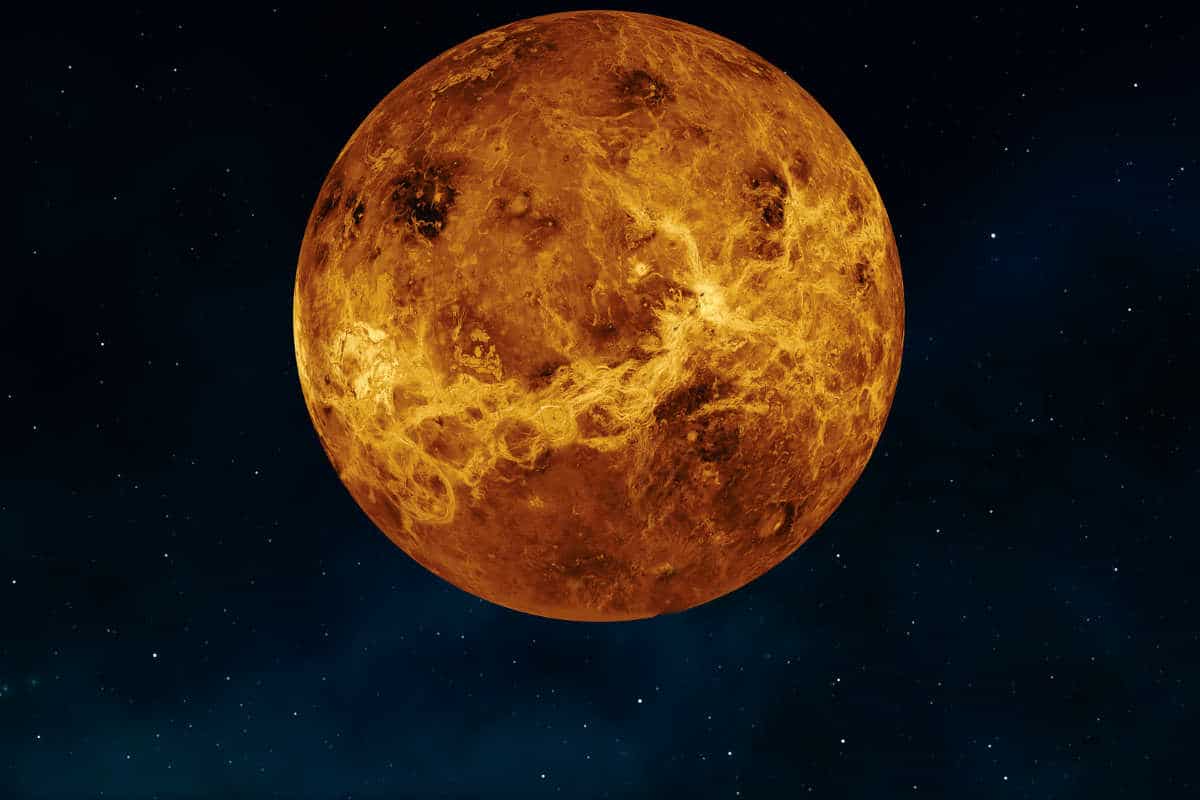
While it was previously suggested that water once flowed liberally across the Venusian surface, that exciting theory is now being questioned in a new study.
Some scientists suspect that Venus was once the first habitable planet in our solar system. Although no longer visible now, they believe that in a distant past Venus harbored oceans of liquid water and had an Earth-like climate. In a new study, researchers have further explored that hypothesis. And that leads to a completely different conclusion.
twin sister
The planet Venus is also seen as the evil twin sister of the Earth. At first glance, Venus is similar in mass and size to our home planet, is also made up of rocky material, contains some water and has an atmosphere. But if you look more closely, you will also notice the differences. Consider Venus’ thick, CO2 atmosphere, its extreme surface temperature (which is well above the melting point of lead), and the layer of clouds laced with corrosive sulfuric acid. All this is in stark contrast to the conditions necessary for life on Earth.
Oceans
However, according to some, this has not always been the case. For example, previous studies have suggested that water once flowed liberally over the Venusian surface. Researchers have now once again tackled this pressing issue in a new study, attempting to find out whether Venus indeed once harbored oceans.
Study
“We simulated the climate of Earth and Venus at the very beginning of their evolution, more than four billion years ago, when the planets’ surfaces were still molten,” explains researcher Martin Turbet. “Due to the high temperatures involved, there might have been water in the form of steam, like in a giant pressure cooker.” Using advanced three-dimensional models of the atmosphere (similar to the models scientists use to simulate Earth’s current climate and future evolution), the team studied how the atmospheres of Venus and Earth would change over time. may have evolved. The researchers paid particular attention to whether oceans appeared on Venus during this process.
Temperature
Unfortunately, the researchers now have to answer ‘no’ to the latter. “Thanks to our simulations, we were able to show that climatic conditions did not allow water vapor to condense in the Venusian atmosphere,” Turbet said. This means that temperatures never dropped sharply, preventing the water in the atmosphere from forming droplets and raining on the surface (as it did on Earth). Instead, water lingered in the atmosphere as a gas. And so oceans would never have been a possibility.
clouds
A significant drop in temperature would only have been possible if the surface of Venus was shielded from solar radiation by clouds. But the climate models show that clouds formed preferentially on the night side of the planet, where logically no sunlight penetrates. “In fact, these clouds created a very powerful greenhouse effect, which prevented Venus from cooling as quickly as previously thought,” Turbet concludes. Basically, instead of acting as a shield, the clouds helped maintain the high temperatures. This created a greenhouse effect and traps heat in the planet’s dense atmosphere. This in turn prevented rainfall. And thus, oceans never formed on the surface of Venus.
Soil
Surprisingly, the simulations reveal that Earth could have easily suffered the same fate. If the Earth had been just that little bit closer to the sun, or if the sun had shone as brightly as it did today in its childhood, our home planet would have looked very different today. Thanks to the relatively weak radiation from the young sun, the earth cooled sufficiently, causing water to condense and oceans to see the light of day.
Which scientists ultimately come out on top (those who suggest that Venus once harbored oceans, or the researchers who argue just the opposite) will have to be seen in future space missions. ESA and NASA have decided this year to undertake no fewer than three space missions to Venus in the coming decades. And one of the most important questions to be answered is whether Venus ever had oceans. “Our results are based on theoretical models and are an important building block in answering the question of the history of Venus,” said researcher David Ehrenreich. “But with our computers we can’t draw definitive conclusions. The observations from the three future space missions to Venus are essential to confirm or refute our work.”
Source material:
“Climate model shows that Venus could never have had oceans– CNRS (via EurekAlert)
“Did Venus ever have oceans?– University of Geneva (via EurekAlert)
Image at the top of this article: Bruno Albino via Pixabay